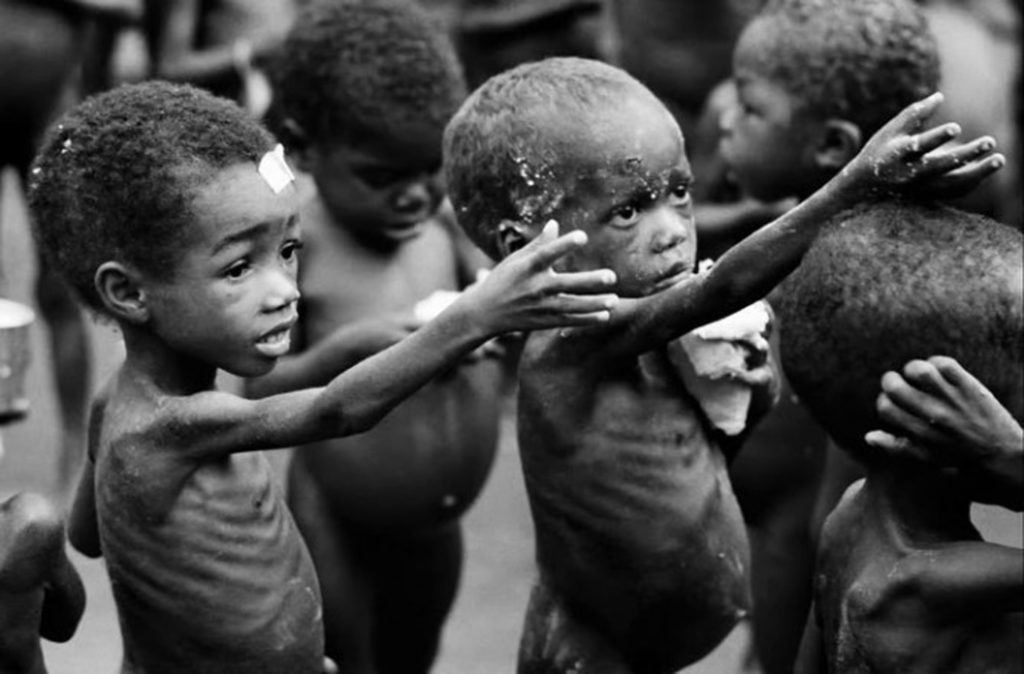SANAA, Yemen – In yet another of the seemingly endless reports of human suffering around the globe, Mark Lowcock, the Under-Secretary-General for Humanitarian Affairs and Emergency Relief Coordinator, told the United Nations Yemen is in imminent danger of country-wide famine.

Over 14 million Yemeni people who already have barely enough food to survive are about to face even worse conditions.
This is more than just another story about people being hungry. It is a story about the very real potential of tens and hundreds of thousands, perhaps millions, dying in a famine.
Famine is more than a lack of food. Famine conditions are very well defined.
- At least one-in-five households face “an extreme lack of food” and other basic needs where starvation, death, and destitution are evident.”
- More than 30% of children in the affected area suffer from “acute malnutrition.”
- At least two of every 10,000 people die every day from starvation.
Warn-torn Yemen is on the brink of these conditions. Lowcock warned that the situation in Yemen has become grave.
There is now a clear and present danger of an imminent and great big famine engulfing Yemen: much bigger than anything any professional in this field has seen during their working lives.
The humanitarian NGO, Save the Children, reported at the end of 2017 that an estimated 130 children were already dying from hunger and disease every day in Yemen. How much more grave does it have to become before someone comes to their aid?
OXFAM warns that waiting to respond until a famine is officially declared is already too late. The agency defines famine as the condition “When people face a complete lack of access to food and other basic needs and experience mass starvation, death, and destitution.”
According to these definitions, the world has suffered only two famines in the past 20 years. Those famines were in South Sudan and Somalia with more than a quarter of a million deaths from starvation in Somalia.
The situation is so dire in Yemen at this point that, according to Lowcock, “The immune systems of millions of people [who have been] on survival support for years-on-end are now literally collapsing, making them – especially the children and the elderly – more likely to succumb to malnutrition, cholera, and other diseases.”
There is no doubt that the civil war in Yemen has been a major contributor to the current conditions. However, neither side has appeared willing to cease military operations. Rather, they continue to fight in an around Yemen’s major port, substantially limiting the amount of aid that can enter.
Lowcock summarized the urgency of the Yemen crisis, saying that all stakeholders must “do everything possible to avert catastrophe.” He added that their failure to do so “would be the death knell for countless innocent civilians, most of them women and children.”
Feeding the poor and hungry is a fundamental outreach of Gospel for Asia and our partners in South Asia. Join us as we pray for the people of Yemen.
More helpful information about the realities of world hunger is available at the Missions Box report, “2018 UN Report on The State of Food Security and Nutrition in the World.”
To read more news on Yemen on Missions Box, go here.
Sources:
- Sight Magazine, Half of Yemen’s population may soon face pre-famine conditions, says UN humanitarian chief
- United Nations Office for the Coordination of Humanitarian Affairs, Under-Secretary-General for Humanitarian Affairs and Emergency Relief Coordinator, Mr. Mark Lowcock, Remarks to the Security Council on the Humanitarian Situation in Yemen
- NPR, Yemen In ‘Clear And Present Danger’ Of Massive Famine After Years Of Violence
- NBC News, 14 million people in Yemen face ‘imminent and great big famine’
- BBC News, Yemen crisis: Half of population facing ‘pre-famine conditions’
- OXFAM, What is famine, and how can we stop it?
Image Source:
- By Sophie abasa [CC BY-SA 4.0], from Wikimedia Commons




